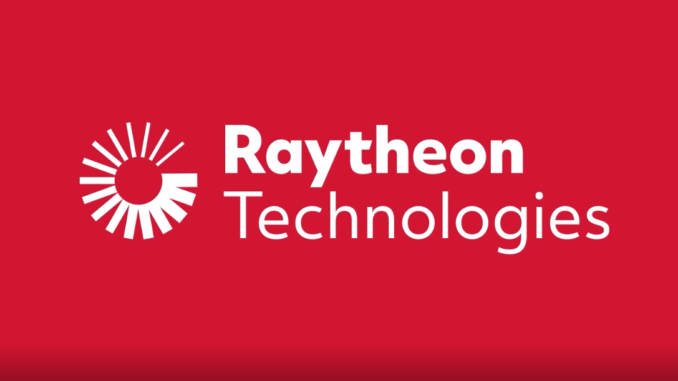
Military veterans are more than just part of the culture at Raytheon Technologies. You might even say they’re part of the company’s products and services.
Across our four businesses, former soldiers, sailors, airmen and marines – including some who still serve as reservists – work in factories, travel to test sites and embed on military installations around the world, drawing from their unique experiences and collaborating with colleagues toward a common goal: to produce the technology customers rely on to meet their missions.
Here are some of the ways that the 17,000 military veterans who work at Raytheon Technologies inform every aspect of our work, from engineering and design all the way to testing, deployment and sustainment.
Veterans help us think beyond the theoretical
The engineering process is geared toward meeting technical requirements and specifications. Veterans add to that by bringing what’s known as conops – concept of operations, the military term for thinking about a system from the perspective of the people who will use it.
“(Engineers) are dealing with equations and numbers, pencil and paper,” said Brooks “Finch” Cleveland, a former U.S. Navy pilot who now works as an aviation adviser at Raytheon Intelligence & Space. “We come in and say, ‘That’s fantastic, now let me throw a wrench in it.’”
Case in point: The system Cleveland works with most closely – JPALS, or the Joint Precision Approach and Landing System. It started as a tool to land fighter jets on aircraft carriers in poor flight conditions. Now it’s being adapted to help pilots touch down anywhere in the world.
For Cleveland, who flew F-18s in the Navy, thinking about conops means coming up with scenarios like landing in between mountains, where there’s poor line of sight to GPS satellites, or having to set up and move the system quickly to avoid a counterattack.
“We throw in variables that the real world will throw in,” he said. “We give them all these fantastical ideas, and they somehow figure out how to make it a reality.”
Veterans are experts in communicating with military customers
A good command of conops goes beyond building better products. It can also help show military customers how they’ll benefit – clearly, directly and in their own vernacular.
“Rather than ‘it has this many microns, and its range is this, with wires and washers and all those things that are technical, I create a tactical vignette,” said Tommy Boccardi, a retired U.S. Army Ranger who now works at Raytheon Missiles & Defense. “The value of doing that is they can quickly conceptualize where it fits in the organization.”
Another part of his job is to listen. Boccardi did that with a group of soldiers who met him at a test range to try out the new command launch unit for the Javelin Weapon System, an anti-tank guided munition. Over their customary breakfast of Doritos and energy drinks, and after an enthusiastic first reaction, Boccardi asked them: What do we have to fix?
“Sir, you’ve got to change the zoom,” Boccardi remembers them saying, in reference to the controls for the weapon’s sights. “In and out has to be up and down. Just like a game controller. Just like you’re playing Xbox – up is always zoom in, down is zoom out. It’s intuitive.”
Boccardi wrote it up in his report. It was an easy fix, and the team made it quickly.
Veterans are excellent planners
Military decision-making is all about the mission. No matter what happens, the mission is the priority. That helps determine what’s most important, or “mission critical,” which in turn tells you what needs the best protection and what’s first in line to get back up and running when things break.
So it’s clear to see how that mindset is helpful in all kinds of business operations, from security to logistics to site operations. And that’s how Kim Payne, a U.S. Army veteran, now makes her living at Collins Aerospace, where she is in charge of business resilience.
Part of her job is to prepare the business’ sites for all kinds of emergencies – wildfires, hurricanes and a pandemic have been taking up a lot of her time lately – and to make sure they can keep operating normally, even when the world outside is anything but normal.
“We always have to be prepared in the military for any type of event that can occur,” said Payne, who served three years in the Army and was among the last members of the Women’s Army Corps in the late 1970s. “A geopolitical hazard, a manmade hazard, whatever. It gave me the thought process I needed to be able to maintain the continuity of business.”
Veterans bring a morale-boosting mentality
Amanda Jones would very much like to tell you about “adapt and overcome.”
Anyone who served in the Marine Corps knows that’s where the saying comes from, so it should come as no surprise that’s where Jones comes from too. She worked as an aviation supply analyst in the service, and today she is a materials analyst at Pratt & Whitney, a business of Raytheon Technologies.
“Whenever we came against a challenge, or when something didn’t go as planned, we would say, ‘Adapt and overcome, Marine!,’ she said. “This would remind us that no matter what challenge comes our way, there is a path forward. You just have to stay motivated and determined, and you will reach your goal.”
It turns out that’s good advice for the business world, too.
“Whenever there has been a reorg, or another big change within the organization,” she said, “I just remember: adapt and overcome, and think about the path forward.”

Be the first to comment